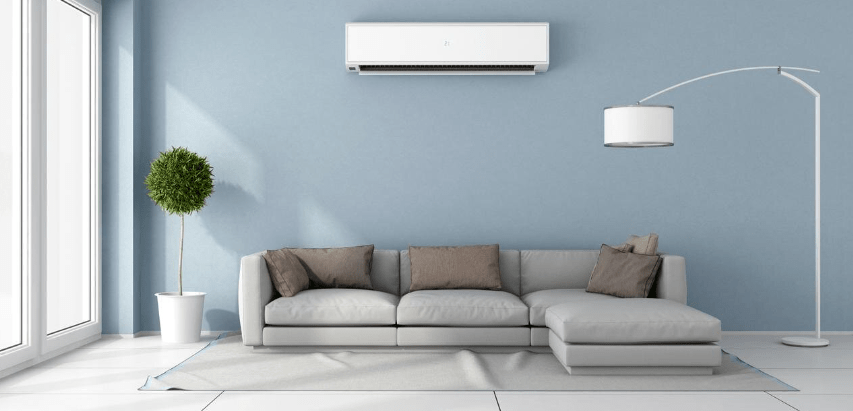Ductless mini-split HVAC systems have revolutionized how homes and businesses approach heating and cooling solutions. These systems offer versatility, energy efficiency, and ease of installation, making them increasingly popular in new constructions and retrofits. We will explore the advantages of ductless mini-split systems and provide essential tips for their installation.

Advantages of Ductless Mini-Split HVAC Systems
If you’re looking for a reputable HVAC company in Vancouver for HVAC installation, consider ductless mini-split. Ductless mini-split HVAC systems provide several advantages over traditional HVAC setups. Firstly, they offer highly customizable zoning options, allowing users to independently control the temperature of individual rooms or zones. This zoning capability enhances comfort and reduces energy consumption by avoiding the need to heat or cool unoccupied spaces.
Secondly, these systems are known for their energy efficiency. Unlike central HVAC systems that can lose energy through ductwork, ductless mini-splits deliver air directly into the room, minimizing energy loss. Additionally, many models are equipped with inverter-driven compressors, which adjust the compressor’s speed to match the heating or cooling load, further enhancing energy efficiency.
Thirdly, ductless mini-split systems are relatively easy to install compared to traditional ducted systems. Installation typically requires only a small hole drilled in the wall for the conduit connecting the indoor and outdoor units. This simplicity reduces installation time and minimizes disruption to the building’s structure.
Installation Tips for Ductless Mini-Split HVAC Systems
Several tips can ensure optimal performance and longevity when installing a ductless mini-split HVAC system. Firstly, it’s crucial to choose the right location for both the indoor and outdoor units. The indoor unit should be installed in a central location within the room or zone to ensure even air distribution. Meanwhile, the outdoor unit should be placed in an area with good airflow and minimal obstructions for efficient heat exchange.
Secondly, proper system sizing is essential for efficiency and effectiveness. An oversized unit will cycle on and off frequently, leading to increased wear and reduced efficiency. Conversely, an undersized unit may need help maintaining desired temperatures, especially during extreme weather conditions. Consulting with a qualified HVAC contractor to perform a load calculation based on factors such as square footage, insulation levels, and local climate is recommended to determine the appropriate size for your space.
Thirdly, ensuring adequate insulation and sealing around the installation area is crucial to prevent energy loss and maintain comfort. Proper refrigerant line insulation and sealing any gaps around the conduit entering the building will help maximize the system’s efficiency and performance.
In addition to installation considerations, regular maintenance is essential to keep a ductless mini-split HVAC system operating efficiently. This includes cleaning or replacing air filters as the manufacturer recommends, inspecting the indoor and outdoor units for any debris or obstructions, and scheduling annual professional maintenance to check refrigerant levels, inspect electrical connections, and ensure all components function correctly.
Maintenance and Troubleshooting
Regular maintenance ensures the longevity and efficiency of ductless mini-split HVAC systems. One of the primary maintenance tasks is cleaning or replacing the air filters every one to three months, depending on usage and environmental conditions. Clogged filters can restrict airflow, reducing system efficiency and potentially increasing energy consumption. Additionally, keeping the indoor and outdoor units free from debris such as leaves, dust, and dirt is essential. Regularly inspecting and cleaning these units helps prevent airflow blockages and ensures optimal performance.
Another critical aspect of maintenance is checking and maintaining refrigerant levels. Low refrigerant levels can indicate a leak in the system, which reduces efficiency and, if not addressed, can lead to costly repairs. Professional HVAC technicians have the tools and expertise to safely inspect and replenish refrigerant levels as needed, ensuring the system operates at peak efficiency.
In terms of troubleshooting, understanding common issues and their potential causes can help homeowners address minor problems before they escalate. Issues such as unusual noises, uneven cooling or heating, or water leaks should prompt a thorough inspection by a qualified technician. Timely diagnosis and repair can prevent further damage and prolong the system’s lifespan.
Environmental Considerations and Cost Savings
From an environmental perspective, ductless mini-split systems offer several benefits. Their energy-efficient operation reduces greenhouse gas emissions compared to less efficient HVAC systems, contributing to lower carbon footprints for homes and businesses. Additionally, the absence of ductwork eliminates potential sources of indoor air pollutants that can accumulate in traditional ducted systems, promoting healthier indoor air quality.
Moreover, ductless mini-split systems can lead to significant cost savings over time. While the initial installation cost may be higher than that of traditional HVAC systems, the energy efficiency and reduced maintenance requirements often result in lower long-term operating costs. Many homeowners and businesses find that the energy savings achieved with ductless mini-split systems offset the initial investment relatively quickly, making them a financially viable choice in the long run.
Ductless mini-split HVAC systems offer numerous advantages, including energy efficiency, customizable zoning, and ease of installation and maintenance. Homeowners and businesses can make informed decisions when choosing HVAC solutions by following proper installation guidelines, performing regular maintenance, and understanding their environmental and cost-saving benefits. Whether for new construction projects or retrofitting existing spaces, ductless mini-split systems are preferred for enhancing comfort, reducing energy consumption, and minimizing environmental impact. Their versatility and efficiency make them a modern solution that aligns with both practical and environmental considerations in HVAC technology.




